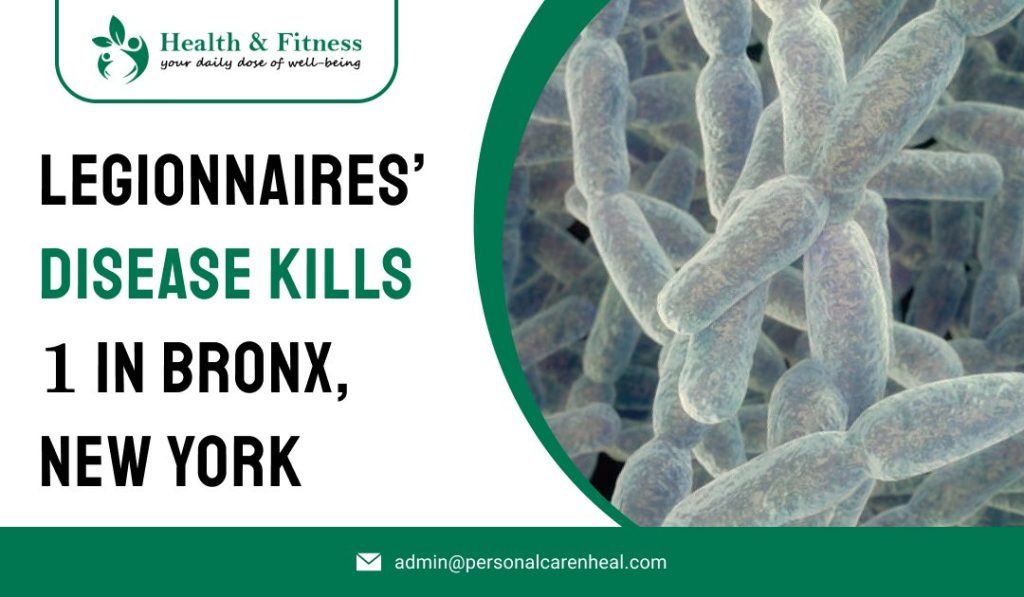After Legionella bacteria were discovered in cooling towers in the Bronx, health officials advised residents experiencing flu-like symptoms to seek medical attention.
The New York City Health Department announced Wednesday that a growing cluster of Legionnaires’ disease cases in the Bronx has resulted in the death of one individual and illness in 18 others, eight of whom are presently hospitalized.
The cases appear to be linked to four water cooling towers on the tops of buildings in the Bronx’s Highbridge area, where Legionella pneumophila, the bacteria that causes Legionnaires’ illness, was discovered, according to officials.
While most persons exposed to the bacteria do not become ill, Legionnaires’ disease can cause serious sickness or death in those who are at higher risk, such as those with pre-existing chronic health concerns. That is why it is important to seek medical attention as soon as you start experiencing flu-like symptoms.
What is Legionnaires’ Disease?
Legionnaires’ disease is a brutal form of pneumonia, which is caused by an infection in the lungs. This disease is caused by the legionella bacterium.
Legionnaires’ disease is most commonly spread by breathing bacteria from water or dirt. Legionnaires’ disease is more common in the elderly, smokers, and persons with weakened immune systems.
Pontiac fever, a milder version of the flu, is also caused by the legionella bacterium. Pontiac fever normally goes away on its own, but Legionnaires’ disease can be lethal if left untreated. Despite the fact that medicines are normally effective in curing Legionnaires’ disease but some individuals continue to have issues after therapy.
What are the Symptoms of Legionnaires’ Disease?
The symptoms of legionnaires’ disease appear for two to ten days with exposure to legionella bacteria. It usually starts with one or more of the following signs and symptoms:
- Headache
- Muscle Aches
- Fever 40 C (104 F) or Higher
Other indications and symptoms may appear by the second or third day, including:
- Cough with Mucus and Sometimes Blood
- Shortness of Breath
- Chest Pain
- Gastrointestinal Symptoms, such as Nausea, Diarrhea, and Vomiting
- Confusion or Other Mental Changes
Legionnaires’ disease is primarily a lung infection, although it can also cause infections in wounds and other regions of the body, including the heart.
What are the Causes of Legionnaires’ Disease?
Most cases of Legionnaires’ disease are caused by the bacteria Legionella pneumophila. Legionella bacteria can be found in water and soil outside, although they rarely cause diseases. However, legionella bacteria can thrive in human-made water systems like air conditioners.
Although Legionnaires’ disease can be contracted through residential plumbing, most outbreaks have happened in large buildings, possibly due to the bacteria’s ability to grow and spread more easily in complicated systems. Also, air conditioners in homes and cars do not need water to chill.
Also Checkout: ” Alzheimer disease symptoms “
How the Legionnaires’ Disease Spreads?
Inhaling small water droplets containing legionella bacteria infects the majority of humans. This could be water from a faucet, shower, or whirlpool, or water from a large building’s ventilation system. Outbreaks have been connected to the following:
- Hot whirlpools and tubs
- Decorative fountains
- Swimming pools
- Drinking water
- Birthing pools
- Hot water heaters and tanks
- Cooling towers in air conditioning systems
Along with the above mentioned spreading sources, the infection can also be transmitted with the following ways such as:
- Aspiration: This happens when liquids enter your lungs by mistake, commonly as a result of coughing or choking when drinking. Legionnaires’ disease can be developed by aspirating water contaminated with legionella bacteria.
- Soil: After working in a garden or utilizing infected potting soil, a few people have contracted Legionnaires’ disease.
What are the Risk factors of Legionnaires’ Disease?
Not everyone who comes into contact with legionella bacteria gets sick. If you do any of the following, you are more likely to get the infection:
- Smoke: Smoking affects the lungs and makes you more prone to different types of lung infections.
- Weak Immune System: Diseases like HIV/AIDS can result in a weakened immune system because of the consumption of corticosteroids and other drugs to overcome the problem of organ rejection after transplant therapies.
- Chronic Lung Disease or Other Problems: This may include diabetes, emphysema, kidney diseases, or cancer.
- 50 Years of Age or More
How to Prevent Legionnaires’ Disease?
Legionnaires’ disease outbreaks can be avoided, but they require water management systems in buildings to ensure that water is monitored and treated on a regular basis. Avoid smoking to reduce your personal risk.
Final Say
We truly hope that you got all the information regarding the Legionnaires’ Disease. It is highly recommended to consult your doctor if you have above-mentioned symptoms. Personal Care N Heal also offers more information regarding health, food, mental health, fitness, cycling, etc., which you can read for the betterment of your life.
[instagram-feed num=4 cols=2 imageres=full showfollow=false ]



